Understanding Sheet Frustration: Solutions & Tips

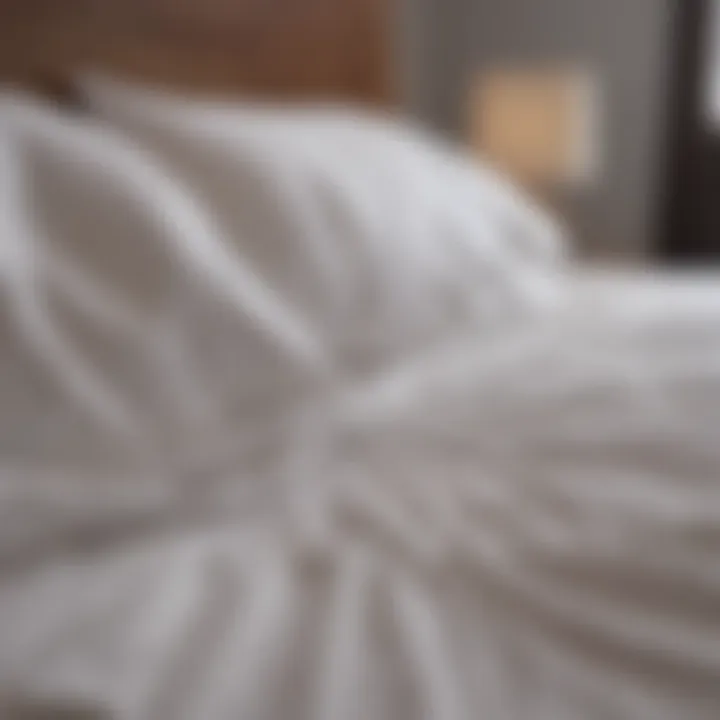
Intro
Bed sheets that frequently slip off the mattress can be a source of significant annoyance. This issue affects many homeowners and impacts their overall sleep experience. Several factors contribute to bed sheets coming off. Identifying these factors is essential for finding practical solutions.
Understanding the different aspects of bedding—such as sheet size, mattress type, and material—can help in addressing this common problem. Additionally, knowledge of maintenance practices can improve sheet retention and enhance the aesthetics of the bed. This guide aims to provide clarity on these issues, offering insights that cater to individuals dedicated to improving their sleeping environment.
Factors Contributing to Sheet Slippage
Understanding the causes behind sheets slipping off is crucial for many homeowners. It highlights the need for harmony between the mattress, sheets, and bed frame design. These elements work together in the bedroom ecosystem. Addressing this issue can lead to a more restful night. Poor sheet retention can disrupt sleep, leading to frustration and fatigue. Thus, evaluating these factors provides valuable insights for improving sleep environments.
Mattress Type and Structure
The mattress type plays a significant role in how well sheets stay in place. Different mattresses, such as memory foam and innerspring, have unique surfaces that influence sheet grip. Memory foam, for instance, provides a more contouring experience, which can either help or hinder sheet retention.
Additionally, the overall thickness and structure of the mattress can affect how well sheets fit. A thicker mattress may require deeper pocket sheets to ensure they do not slide off. The firmness of the mattress also matters. A firmer mattress tends to provide a more stable surface, whereas a softer one may lead to more movement, increasing the chances of sheets slipping off.
Sheet Size and Fit
Sheet size is another critical factor. Using sheets that are too small for the mattress is an immediate cause for slipping. Conversely, sheets that are too large can bunch up, creating an unstable sleeping surface. The fitted sheet should conform closely to the mattress size to minimize movement. Standard sizes like Twin, Full, Queen, and King are common, but there are variations in depth that need to be considered.
Using sheets specifically designed for your mattress type can enhance performance. For example, if the mattress is thicker than average, look for deep pocket sheets that offer adequate coverage. A proper fit significantly reduces the likelihood of slips.
Bed Frame Design
Bed frame design also contributes to how well bed sheets stay in place. A frame that allows a mattress to shift, such as those with a less secure fit, increases the risk of slipping sheets. Bed frames with a solid base often provide more stability. This prevents movement that can lead to sheets coming off throughout the night.
Furthermore, the choice of a bed skirt or no bed skirt can influence how sheets lay. Some designs create an environment where sheets can easily slide off. In contrast, a carefully chosen frame can create a cohesive system for bed stability. Assessing the bed frame's attributes is essential for resolving sheet slippage issues.
"Ensuring that the mattress and sheets work together harmoniously can create a significantly better sleep experience."
Material Influence on Sheet Stability
The stability of bed sheets is closely tied to the materials used in their construction. Understanding how different fabrics and their properties affect the retention of sheets on a mattress is crucial for anyone facing the constant frustration of pulled-off bedding. The type of fabric, its elasticity, and overall quality significantly impact how well sheets cling to the mattress. When selecting bedding, homeowners should prioritize these elements to enhance their sleeping experience.
Types of Fabric
The fabric chosen for bed sheets plays a vital role in their ability to stay in place. Common materials include cotton, polyester, linen, and bamboo. Each fabric has distinct characteristics that can influence performance.
- Cotton: This natural fabric is breathable and soft. However, depending on its weave, it can either remain securely in place or slip off easily.
- Polyester: Synthetic, often less breathable but more durable. Polyester sheets can resist wrinkling and creasing, but might be prone to slipping due to lower friction against the mattress.
- Linen: Sourced from the flax plant, linen sheets are generally sturdy and absorbent. They can grip the mattress better than some other fabrics, but their rough texture may not appeal to all users.
- Bamboo: Known for its eco-friendliness, bamboo fabric offers natural breathability and softness. Its unique structure can sometimes help sheets stay put better than traditional cotton.
When selecting sheets, it's important to consider these fabric types, their durability, and how they perform in relation to the mattress.
Elasticity and Grippage
The elasticity of the fabric is another critical factor in keeping sheets in place. Stretchy materials can conform better to the corners and edges of the mattress, reducing the chance of slippage.
- Stretchable Blend: Fabrics that combine cotton with elastane provide extra grip. This stretch makes it easier for sheets to remain on the mattress during sleep.
- Fitted Sheets with Deep Pockets: Sheets designed with deeper elastic pockets can hold onto thicker mattresses better. This feature provides the necessary grip to minimize movement.
- Non-Slip Textures: Some fabrics come with textures that grip the mattress instead of sliding off. This extra friction can be a game-changer for those with particularly restless sleep habits.
In essence, sheets that offer more elasticity and grippage significantly reduce the likelihood of coming off, enhancing comfort throughout the night.
Quality of Construction
Beyond fabric type and elasticity, the overall quality of construction is essential. Well-made sheets contribute to stability. Things to consider include:
- Stitching and Seams: The quality of stitching can determine sheet durability. Strong seams prevent fraying and allow sheets to maintain their shape over time.
- Elastic Band Quality: A thicker, more durable elastic band can promote better sheet retention. It holds the fabric tightly against the mattress, reducing movement.
- Weight of the Fabric: Heavier sheets tend to stay put better than lighter options. A consistent, weighted fabric can counteract movements during the night.

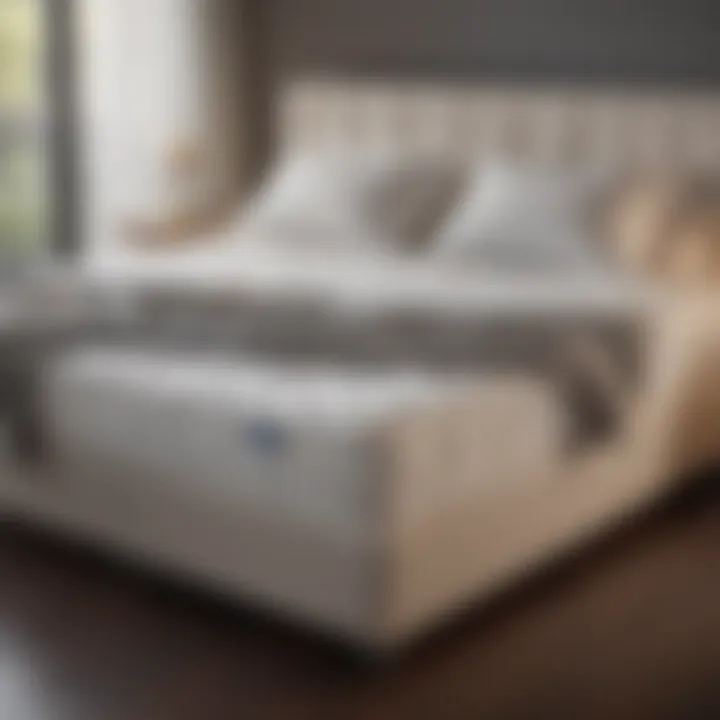
Quality construction ensures that sheets perform well long-term, offering not just aesthetic value but practical functionality in preventing slippage.
How Sleep Positions Affect Sheets
Understanding how sleep positions impact sheet retention can greatly enhance one's sleeping arrangement. The position in which one sleeps tends to affect not just comfort but also how easily sheets can be displaced. When sheets are not properly anchored, they may slip off during the night, leading to discomfort and a disrupted sleep experience. Recognizing specific elements about sleep positions is crucial for those seeking to optimize their bedding setup.
Movement and Activity During Sleep
Many people move around during sleep, whether due to discomfort, adjusting for varying temperatures, or merely switching positions. These movements can lead to sheets coming loose, especially if the fitting is not secure. Active sleepers tend to toss and turn, causing sheets to bunch up or slide off the mattress. To combat this, understanding individual sleeping habits is important.
- Identify Activity Level: Do you wake up in a different position than you fell asleep? The more active the sleeper, the higher the chance for sheets to come undone.
- Invest in Fitted Sheets: Sheets designed with deep pockets may stay in place better for those who move around.
- Consider Sheet Type: Cotton sheets, for instance, can be softer and may slide off more easily than polyester blends.
It’s worthwhile to assess how your nightly movements affect your bedding. By making small adjustments, like tucking sheets more securely, the disruptions can be minimized.
Different Sleep Positions
The position in which one sleeps—back, side, or stomach—can also dictate how easily sheets stay in place. Each position interacts differently with the bedding. For instance:
- Back Sleepers: This position tends to keep sheets relatively intact since most movement occurs laterally.
- Side Sleepers: Side sleeping may cause more friction, leading to sheets creeping up or down the sides of the mattress, especially if the sleeper shifts.
- Stomach Sleepers: This position can create considerable stress on sheets, especially if the person tends to curl inwards, which may pull at the fabric.
Fitted sheets with deeper corners or elasticated edges can provide better retention across different sleep positions. It is crucial to choose products that accommodate individual preferences, thus reducing the likelihood of nightly sheet battles.
"Awareness of your sleeping position can guide you to better bedding solutions and restful nights."
By understanding the connection between sleep positions and how bedding behaves, individuals can make informed choices about their sleep products. Adjusting the bedding setup according to personal sleeping habits will lead to an enhanced sleeping environment.
Impact of Seasonal Changes
Seasonal changes significantly impact the quality of rest individuals experience while sleeping. The time of year can dictate not only the comfort of your bed linens but also how they interact with your body and the environment. Understanding these seasonal shifts can enhance your sleeping setup.
Temperature and Humidity Effects
Temperature fluctuations and changes in humidity can affect how bed sheets perform. During warmer months, higher humidity can cause sheets to cling to the mattress, making it easier for them to shift during the night. This results in discomfort and disruption of sleep. Conversely, in colder months, sheets may become more rigid and less conducive to staying in place.
Various factors can intertwine:
- Heat may cause different reactions in bedding materials. Cotton, for example, breeds more movement in warmer climates compared to materials like bamboo, which have better moisture-wicking properties.
- Humidity can lead to an increase in static cling, causing sheets to stick to various bedding components, making them unstable and prone to slippage.
When facing shifts between dry and humid weather, it might be wise to consider which materials suit better for each situation.
Seasonal Bedding Choices
Choosing the appropriate bedding for each season adds another layer to maintaining sheets in their proper place. The right fabric can enhance comfort while also limiting movement throughout the night. Some fabrics are ideal when temperatures drop, while others excel in warmer months:
- Winter: Flannel or heavier duvet covers provide warmth but may restrict the breathability that helps keep sheets in place. Choosing a fitted design helps limit slippage.
- Summer: Lightweight cotton or linen promotes airflow and can help keep sheets from moving excessively. The coolness of these materials allows for easier shifting when adjusting.
Additionally, consider using seasonal duvet covers and blankets that allow for a cohesive and functional bedding setup. One should also take care to rotate bedding options, which means switching out summer and winter linens to match climate needs effectively.
Ultimately, acknowledging how the seasons dictate sleeping conditions is essential for maintaining optimal sheet positioning. This knowledge informs better product choices contributing to better overall sleepl and comfort.
Choosing the Right Bedding
Selecting the appropriate bedding is crucial in addressing the widespread frustration of sheets that do not stay in place. This aspect extends beyond mere aesthetics; it encompasses functionality, comfort, and even health considerations. The right bedding mitigates problems associated with slippage and ensures a more pleasant sleeping experience.
Optimal Size Selection
Size plays a vital role in the performance of bed sheets. It is imperative to match the sheet dimensions with the mattress size accurately. When sheets are too small, they lack the coverage needed to stay put, while oversized sheets might bunch up, leading to slippage during sleep.
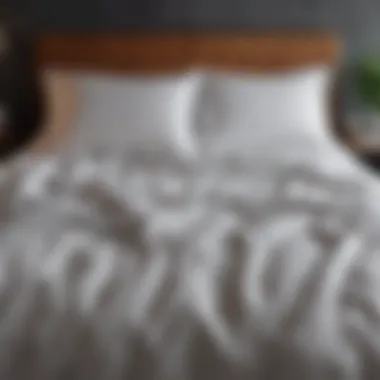
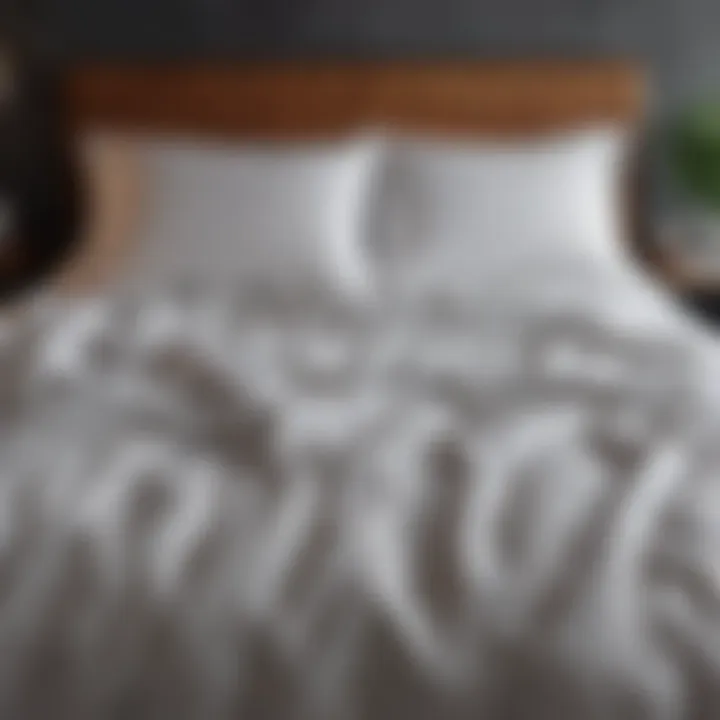
It is advisable to measure your mattress before purchasing new sheets. Look for the following:
- Matress width and length: This includes standard sizes such as twin, full, queen, or king.
- Mattress depth: Some mattresses are thicker due to additional padding or toppers. Ensure the fitted sheets are designed to accommodate this depth.
Using sheets that are specifically labeled for deep pockets may also be beneficial. This ensures a snug fit around the corners, reducing the risk of them sliding off during restless nights.
Recommended Materials
The choice of materials for bed sheets can significantly impact their adherence to the mattress. Different fabrics present unique properties that influence durability, comfort, and slip resistance.
Consider the following materials:
- Cotton: Known for breathability and comfort, cotton sheets with a higher thread count tend to hold their shape better over time.
- Microfiber: This synthetic material provides excellent grip due to its finer fibers, keeping sheets from slipping off, but may not be as breathable as cotton.
- Bamboo: Eco-friendly and soft, bamboo sheets offer good movement control, which can help keep them securely in place.
- Linen: While linen sheets are breathable and have a distinctive texture, they may be prone to sliding unless properly tucked or secured.
In addition, consider the weave. Sateen weaves tend to be softer but more slippery, whereas percale weaves can provide a more textured surface that helps sheets cling to the mattress better.
"Choosing the right bedding is not just about comfort; it encapsulates the overall sleep experience."
By focusing on size and material, homeowners can make informed decisions that will improve their bedding setup and reduce the recurring problem of sheets coming off.
Maintaining Sheet Position
Maintaining the position of bed sheets is critical for both comfort and aesthetics in any bedroom. When sheets slip off, the disruption can affect the quality of sleep and, ultimately, the overall experience of rest. This section will delve into practical methods to secure sheets effectively, focusing on two key areas: the use of specialized accessories such as straps and clips, and various tucking techniques.
Using Sheet Straps and Clips
One of the most straightforward solutions for preventing bed sheets from slipping is utilizing sheet straps and clips. These accessories are designed specifically to hold sheets tightly against the mattress, reducing the likelihood of movement during the night.
There are several types of sheet straps available in the market. Some feature elastic bands that stretch over the corners of the mattress, while others employ clips that grip the sheet fabric.
- Ease of Installation: These fasteners are typically easy to install, often requiring no additional tools. They can be adjusted according to the mattress thickness to ensure a snug fit.
- Variety in Design: Different designs cater to different bed setups, such as adjustable lengths for various mattress sizes.
- Durability: Quality straps are made from strong materials that hold up under tension over time.
While investing in sheet straps can be beneficial, it is essential to choose a product that complements the sheet material to prevent damage or wear.
Tucking Techniques and Folding
Another effective method to maintain sheets in place involves mastering various tucking techniques. Properly tucking sheets can not only reduce movement but can also create a more polished look for the bed.
- Hospital Corners: This method, commonly seen in hotels, involves folding the corner of the flat sheet under the mattress to create a tight and secure finish.
- Under-Mattress Tucking: Tucking the sheet deeply under the mattress can help anchor it securely. This approach works best when dealing with a thicker mattress that allows for greater depth in tucking.
- Layering Technique: Placing the fitted sheet directly on the mattress, followed by the flat sheet tucked securely under the mattress can offer additional stability.
In addition to these methods, regularly checking the condition of your bedding and adjusting them accordingly can provide a more satisfying sleep experience.
"Properly maintained sheets not only enhance sleep quality but also contribute to a more inviting bedroom ambiance."
By employing both straps and proficient tucking techniques, homeowners can significantly minimize the issue of slipping sheets. Together, these methods provide a holistic approach to bedding stability that addresses both functionality and aesthetics.
The Role of Mattress Protectors
Mattress protectors play a crucial role in enhancing the functionality and durability of bed linens. Many people overlook their importance, assuming that sheets are enough to keep a bed clean and comfortable. However, a mattress protector adds an essential layer of defense against spills, stains, and allergens. Their presence can significantly influence how well sheets adhere to the mattress, ultimately contributing to a peaceful night's sleep.
When sheets slide off at night, many may not consider how a mattress protector could be a contributing factor or solution. It acts like a stabilizer, ensuring that the mattress surface remains even and secure. Thus, investing in a mattress protector is not merely a matter of comfort but rather a strategic decision for maintaining both hygiene and the longevity of bedding items.
Benefits of Using a Protector
Using a mattress protector comes with various benefits. Here are some key points:
- Stain Resistance: Mattress protectors safeguard the mattress from spills and accidents, particularly helpful for households with children or pets.
- Allergen Barrier: Many protectors are designed with materials that block dust mites, mold, and other allergens, promoting a healthier sleep environment.
- Enhanced Sheet Stability: By providing a better grip on the mattress surface, protectors can help keep sheets in place, reducing the likelihood of slippage.
- Easier Maintenance: Protectors can be washed easily, making it simpler to maintain a clean sleeping environment while protecting the mattress itself.

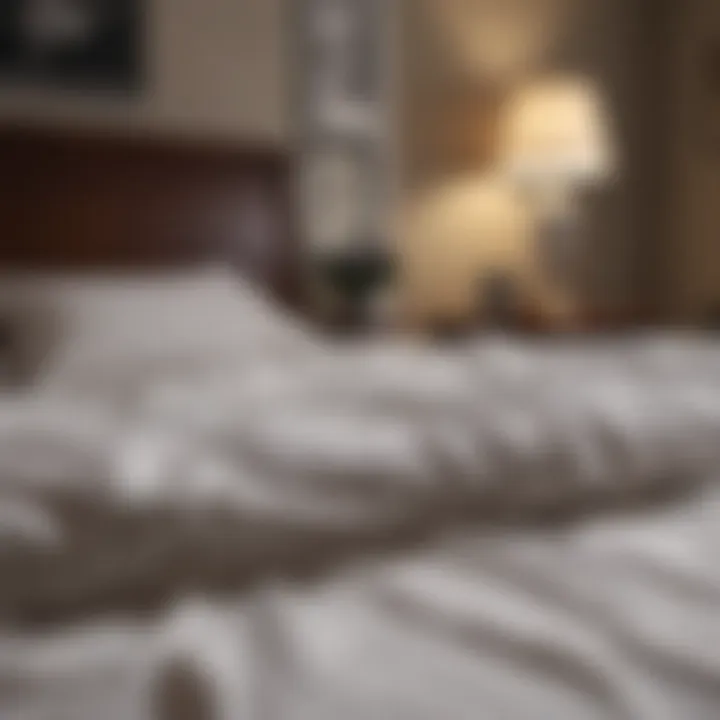
It is evident that the benefits extend beyond the basic purpose of keeping the mattress clean. The enhanced sheet retention is a particular benefit that can deal directly with the frustrations many experience with slipping sheets.
Types of Mattress Protectors
There are several types of mattress protectors to choose from, each serving different needs. Understanding these options can aid in making an informed choice:
- Waterproof Protectors: These are great for preventing liquids from reaching the mattress. They are typically made from materials like vinyl or polyurethane, providing a robust barrier against spills.
- Allergy-Reducing Protectors: Often made from tightly woven fabrics, these protectors are designed to keep dust mites and allergens at bay, making them perfect for allergy sufferers.
- Cooling Protectors: In warmer weather, cooling protectors can help regulate body temperature, enhancing comfort and potentially preventing tossing and turning that might otherwise lead to slippage.
- Classic Quilted Protectors: These add a slight cushion and often feature a softer feel, improving overall sleeping comfort while still allowing some protection against stains and allergens.
Selecting the appropriate type of mattress protector can make a significant difference in the overall sleeping experience and help mitigate the issue of sheets coming off during the night. It is wise to consider how each type aligns with your individual needs and preferences.
Common Misconceptions Behind Sheet Retention
When it comes to bed sheets and their tendency to come off the mattress, individuals often hold certain misconceptions that can impact their choices and satisfaction with bedding. Understanding these myths can lead to better-informed decisions that contribute to a more restful sleep environment. In this section, we will delve into two prevalent misunderstandings affecting sheet retention and how correcting these views can lead to improved sleep quality.
The Size Myth
One of the most pervasive misconceptions is that as long as the sheets are labeled as fitting a particular mattress size, they should stay in place. This assumption can lead to frustration when sheets frequently come undone.
In truth, several factors come into play with size compatibility. Not all mattresses labeled as the same size adhere to exact dimensions. Some brands may produce mattresses that are slightly thicker or have varied depths than standard measurements. This discrepancy may cause fitted sheets to slip off easily.
Additionally, the depth of the mattress also significantly influences how well sheets fit. Standard sheets may not accommodate thicker mattresses, leading to slippage, even if the declared size matches. It is essential to measure both the length and depth of the mattress.
To avoid confusion, consider these points:
- Always measure your mattress dimensions before purchasing sheets.
- Look for sheets specifically labeled as deep pocket or extra deep if your mattress exceeds standard thickness.
- Understand that beds with additional padding or toppers will alter the effective size of your mattress, requiring custom-sized sheets.
Quality vs. Affordability
Another common myth centers around the belief that affordability translates to adequate quality in bedding materials, leading to misconceptions about how investment levels relate to performance. Many people assume that lower-priced sheets are just as effective in securing their place on the mattress as higher-priced options.
While there are budget-friendly options that can work just fine, true durability and performance are often evident in higher-quality materials. The fabric quality, weave type, and elasticity are crucial for sheet integrity. Poorly constructed sheets made from low-quality fabrics are more likely to stretch and lose their grip over time, resulting in frequent adjustments and slippage.
Consider these points when evaluating bedding purchases:
- High-thread count sheets tend to offer better quality but may not always be necessary.
- Look for sheets with strong elastic bands, as these can help keep the corners securely in place.
- Invest in well-reviewed products from reputable brands; they may cost more upfront but save money in the long run by reducing replacement frequency.
"Investing in quality bedding is not merely an expense; it is a commitment to enhancing your sleep experience."
Recognizing these misconceptions empowers homeowners to make more informed decisions about their bedding. Understanding the importance of accurate sizing and the value of quality over price will help foster a more stable relationship between sheets and mattresses. With better choices, it is possible to minimize frustrations related to sheet retention, leading to a more pleasant and restful sleep experience.
Long-Term Solutions for Bed Sheet Issues
Finding solutions to the persistent problem of bed sheets coming off is crucial for anyone who seeks a restful night’s sleep. Addressing this issue effectively can improve both sleep quality and the overall aesthetics of the bedroom. A strategic approach includes investing in quality bedding and adapting one’s home environment, which can mitigate the frustrations of misaligned sheets considerably.
Investing in Quality Bedding
Quality bedding is a significant factor in the longevity and stability of sheets. Firstly, it is essential to select sheets that fit the mattress snugly. Often, buyers prioritize aesthetics over functionality, but this is a crucial aspect. Look for sheets labeled as "deep pocket" which can accommodate thicker mattresses.
When choosing materials, cotton blends, particularly those with a higher thread count, typically provide more grip and durability. Also, consider options like bamboo or jersey knit, which offer better stretchability. A well-constructed fitted sheet typically has elasticated corners that can better grip the mattress corners. This design plays a vital role in maintaining sheet position throughout the night.
Another aspect to consider is the mattress protector. While not directly a sheet issue, a protector can add grip and provide additional comfort, influencing how well sheets stay in place. Investing in reputable brands such as Brooklinen or Parachute can lead to better experiences in terms of both comfort and functionality.
Adapting Home Environment
The environment in which you sleep can impact the positioning of bed sheets. One practical solution is to assess the bed frame design. A sturdy frame allows for better stability, keeping the mattress in place and indirectly reducing sheet slippage.
It is also wise to evaluate the bedding setup. Ensure that the mattress fits well within the frame without excessive movement. If fluctuations are present, consider using non-slip mattress pads or adding rubber grippers beneath the mattress for more friction.
The management of temperature and humidity also affects sheet behavior. High humidity can cause materials to slip, while a dry atmosphere might cause static cling. Maintaining a balanced environment through air conditioning or humidifiers can help manage these issues effectively.
"Addressing bed sheet issues is not just about the sheets themselves; it encompasses the entire sleep environment."
By taking these steps—investing in quality bedding and adapting the home environment—one can find sustainable solutions to the ongoing frustrations with bed sheets. Those practical changes can enhance overall sleeping conditions and ensure that sheets remain in place, allowing for undisturbed sleep and a more organized bed aesthetic.



